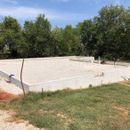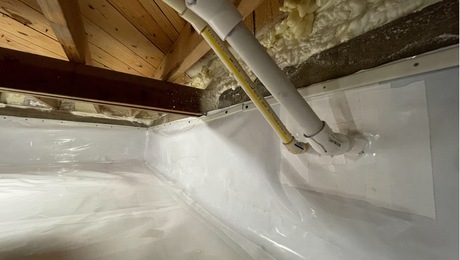Overwintering an Exposed Slab
I’m building a 44×64 shop just outside of Kansas City.
I have the 4′ and 6′ stem walls (grade change) poured on top of a footing and everything is backfilled inside and out. My next step is installation of the vapor barrier and then insulation board for the radiant floor heating system.
Unfortunately I won’t be able to get started on the actual structure of the shop until next spring…so I’m wondering, do I stop where I am now, or press forward and get the slab poured this fall?
I would love to continue with the shop as the weather is finally going to start cooling down here and I want to use this opportunity to get all of the radiant heat floor provisions installed and covered up with the concrete slab, however my concern is damage to the slab and/or stem walls over the winter – primarily water entering along the edge of the slab where it meets the stem wall and freezing, causing cracks. I will also have a trench floor drain system in part of the building and I’m not sure how that would be impacted by snow and freezing temperatures.
Any thoughts? Am I over-thinking it? Thanks all!
GBA Detail Library
A collection of one thousand construction details organized by climate and house part










Replies
I think I would [and have BTW] leave it till next year and enjoy the free soil compaction of a few good rainstorms
You could get lucky or you could get unlucky (as respects winter weather).
I assume you have sub-slab insulation [in large part] because of radiant heat. If so, that will provide you a measure of safety as respects the slab.
I'd be asking myself if rushing to get things done to pour the slab would be counter-acted by taking time to get things done pre-pour very well and then being on-schedule for a late winter/early spring pour.
On the flip side, if you know you can react quickly to a long period of freezing weather, you could pour now and be prepared to tent and heat the foundation for that period.
It doesn't take a lot to keep a bubble of air above freezing for a relatively short period of time, but it does require you to be attentive, available, and prepared.